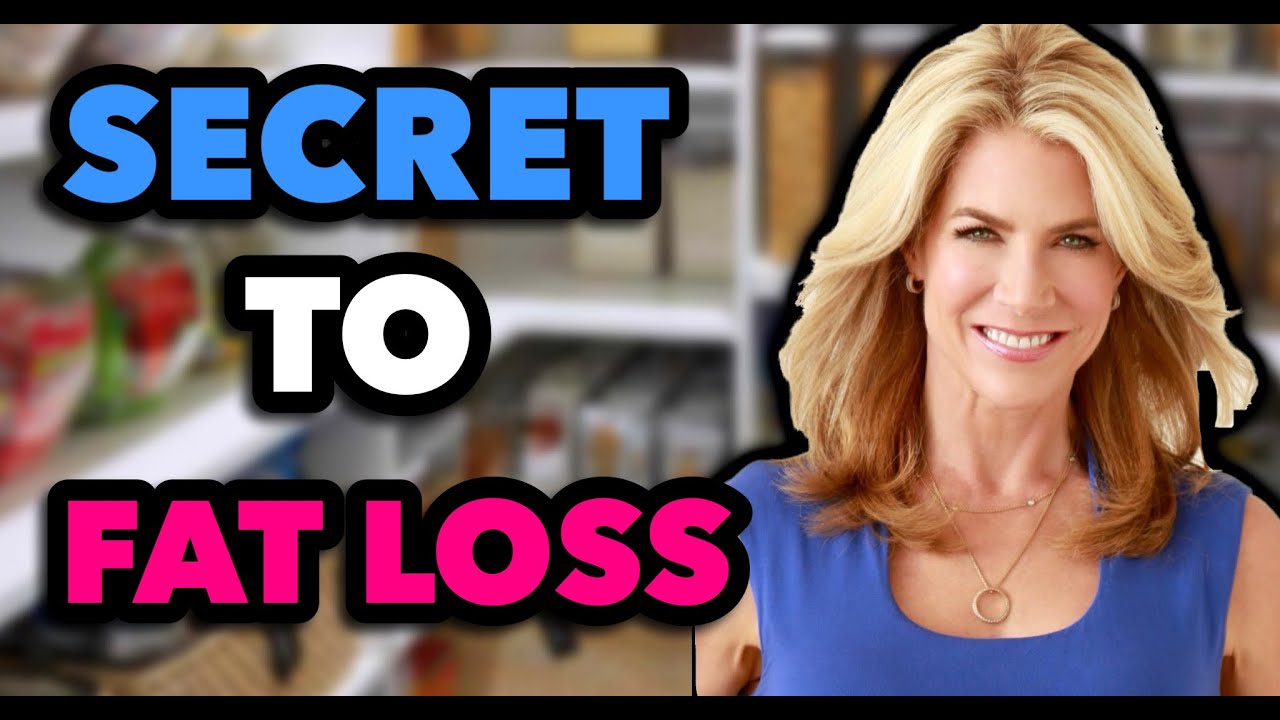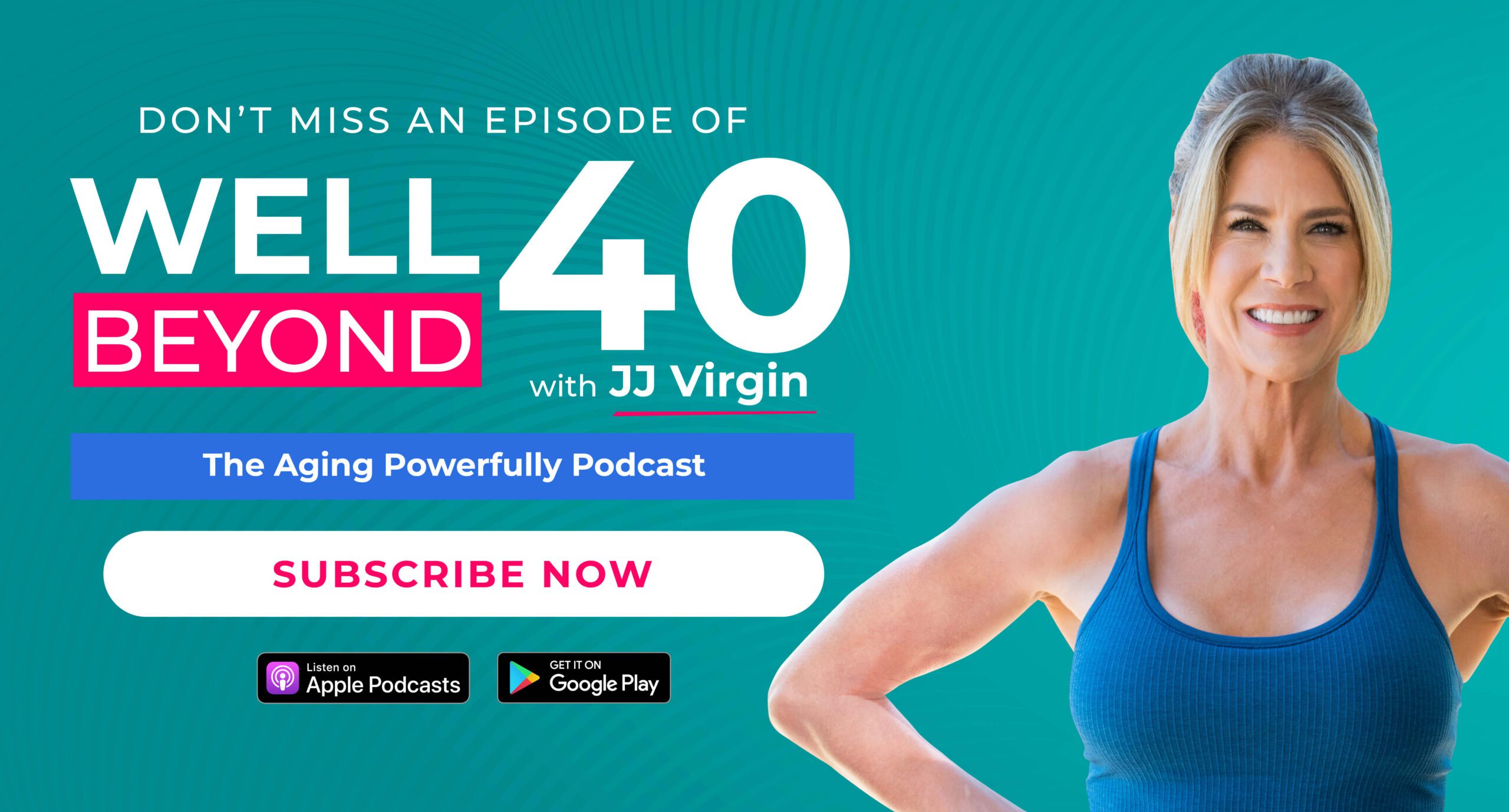As I approached my 60th birthday, I set an ambitious goal: to get in the best shape of my life. The foundation of my philosophy was simple: aging is a privilege. Aging powerfully, however, is a choice.
My main priority along the way was to build as much muscle as possible, laying a solid foundation for a healthy, happy future. Research shows muscle mass decreases about 3-8% per decade after the age of 30. This rate of decline is even higher once you turn 60.1 Honing my habits, I effortlessly lost 10 pounds—a pleasant bonus to my goals.
But it wasn’t what I did that gave me the results—it’s what I stopped doing that made a big difference.
7 Things I STOPPED Doing to Lose 10 Pounds
1. I Stopped Focusing on Losing Weight
Specifically, I stopped fixating on the weight itself and changed my focus to what that weight was made up of. Along with muscle mass, we lose strength and power with age. One study found that once women turn 65, they lose about 1-2% of their muscle strength and 3.5% of their muscle power yearly.2
Recognizing this, I shifted my routine to focus on building strength and power. Initially, I gained four pounds. However, using a body-composition scale, I saw that most of this weight gain was muscle, with only a little fat.
As I built more muscle, my body composition improved even further, and I began to lose fat more efficiently. Besides eating protein first, I incorporated more intense workouts that included power-focused exercises. I added sprints, jumps, and kettlebell work, which involved more speed and intensity. These changes boosted my muscle mass and enhanced my fitness and body composition.
2. I Stopped Fasted Workouts
Intermittent fasting works well for some people, but I found it wasn’t right for me as my gym intensity increased. After testing this approach for several months, eating breakfast before my workouts significantly improved my performance. I could work out much harder by eating breakfast an hour before hitting the gym (in my case, about 8 am).
When I’m just doing a light cardio workout, I don’t worry about eating beforehand and often do it fasted. However, for intense weight-training sessions, especially with the addition of power exercises, having a balanced breakfast makes a huge difference. My go-to breakfast includes a mix of protein, carbs, and healthy fats, emphasizing higher protein. Typically, it consists of about 50 grams of protein, 20 grams of carbs, and a little fat. This combination fuels my workouts and helps me perform at my best.
After my workout, I refuel with lunch that includes plenty of protein and healthy carbs. Carbs replenish your glycogen stores, the energy reserves your muscles use during exercise, letting you recover faster and feel less tired. Protein, on the other hand, provides the amino acids for muscle repair and growth.3, 4 This allows your muscles to recover and strengthen after being stressed during your workout. This approach has dramatically enhanced my workout effectiveness and overall fitness progress.
3. I Stopped Missing My Supplements
I’m consistent with taking my pills. I make pill baggies and travel with them to ensure I get all the necessary supplements, including vitamin D, omega-3s, and magnesium. I also love Mitopure. This amazing supplement supports energy production and overall cellular health, helps maintain muscle function and performance, and improves metabolic health and longevity. (Use code JJ10 for 10% off Mitopure and other Timeline Nutrition products.*)
Powders, however, were a different story. At home, I love adding collagen to my coffee. I’m consistent with mixing creatine into my smoothie. I always carry essential amino acids and electrolytes to the gym. However, I wasn’t maintaining this routine while traveling, which was problematic since these are essential for optimizing body composition.
Now, I always travel with my pills and powders in a big water bottle. I don’t forget to pack them, just like I wouldn’t forget to pack essentials like clean socks or T-shirts. Some effective ways to ensure you never miss your pills and powdered supplements:
- Baggies: Use reusable baggies (like silicone Stasher bags) to portion out your daily supplements. Label each bag with the day or meal to keep track easily.
- Pill organizers: Invest in a multi-compartment pill organizer. These are perfect for sorting out pills and capsules by day or time of day.
- Travel-sized containers: Carry your supplements in travel-sized containers or empty vitamin bottles. These are especially useful for protein powders and larger quantities.
- Label everything: Label each bag, container, or compartment with the supplement name and dosage to avoid confusion and ensure you take the correct amounts.
- Carry-on bag: Always keep your supplements in your carry-on bag to avoid losing them in checked luggage and to ensure they are easily accessible.
4. I Stopped My Lazy Evening Routine
Working from home often blurs the line between work and personal time. To make that transition, my husband Tim and I would open a bottle of wine and flop on the couch after dinner. Binge-watching TV and drinking pinot noir provided instant gratification, but it wasn’t doing me any health-related favors.
I moved away from that sedentary evening routine. Instead, I integrated activities that promote relaxation and recovery, such as sauna sessions, walking or rucking, and hot baths with Epsom salts. We still enjoy a little Netflix but do it while using the sauna. These changes helped me unwind and reach my health goals.
I also prioritized sleep hygiene to ensure I got quality rest every night. After all, studies show that not getting quality sleep is a surefire way to hinder fat loss.5 Using an eye mask and earplugs, I created an optimal sleep environment that blocked light and noise.
Good sleep hygiene practices became essential for my evening routine, including maintaining a consistent sleep schedule, creating a relaxing bedtime ritual, and taking Sleep Candy™ so I fall and stay asleep every night.
5. I Stopped Leaving Things to Chance
What you measure and monitor, you can improve. This goes double when you’re on the road, since we underestimate our food intake.6 To stay on top of this, I always have on hand a few key essentials, even when I travel:
- Food scale: Tracking my food with a scale ensures accuracy in how much I eat. Using one is easy. Ensure the scale is set to the correct unit (grams or ounces). Place your empty plate or container on the scale and zero it out. Add your food item to the plate and read the weight. Note the weight of each food item to track your intake accurately.
- Macro tracking: The Cronometer app is a must-have. It’s like having a personal nutritionist in your pocket with its easy meal and beverage logging, comprehensive food database, and automatic macro calculations. Plus, you can customize your macro targets to align with your goals.
- Body-composition scale: I weigh myself daily, even on days that I’m traveling, focusing on body composition rather than just weight. Remember, it’s not just about what you weigh; it’s about what your weight is made up of. A body-composition scale reveals muscle mass, fat, and other helpful metrics (here’s a handy travel scale option).
- Renpho smart tape measure: This Bluetooth device syncs with an app on my phone, allowing me to measure my waist and hip circumference weekly. Along with a body composition scale, it helps me track my metrics daily and averages over the week.
- Heart rate variability (HRV): This insightful metric helps gauge my training readiness, especially with intense power workouts. HRV can indicate when more recovery time is needed, ensuring consistency without overtraining. I use the Polar H10 Heart Rate Monitor.*
- Pedometer: Tracking my steps helps me stay active, especially while traveling. I often use the hotel stairwell for extra activity, making it easier to get in more steps. You can buy a stand-alone pedometer or use an app on your smartphone.
I also don’t leave food to chance on the road. I use Instacart to deliver groceries to the hotel, ensuring a healthy breakfast without resorting to carb-heavy buffets and room service.
6. I Stopped Eating Veggies First
Your mother probably told you to eat your veggies first. She was right: they are important. I used to start my meals with salad, then veggies, and finally protein. However, studies show that eating protein first stabilizes blood-sugar levels, keeping you full longer and supporting fat-loss efforts.7
I changed my meal priorities by consuming protein before other macronutrients, including vegetables. Protein has a higher thermic effect and takes longer to digest than carbs and fats, so you stay full for longer.8 By prioritizing protein at the start of my meals, I’ve enhanced my overall health, improved weight management, and more effectively supported my fitness goals.
7. I Stopped Eating So Many Carbs at Night
I’ve long enjoyed incorporating slow, low carbs at evening meals. These low-glycemic carbs digest slowly. As a result, they gradually rather than quickly increase blood-sugar levels, helping manage hunger and energy levels.
On the other hand, your body digests high-glycemic carbs quickly, leading to rapid blood-sugar spikes. Dr. Alan Christianson notes that these carbs can help you sleep better by stabilizing cortisol levels, the hormone associated with stress and wakefulness.9
However, I discovered that enjoying low-glycemic fruits like berries also worked. I’ve always felt better eating fewer carbs. Berries offer many of the same benefits as slow-digesting carbs but with fewer total carbs and more nutrients. Instead of having ½ cup of wild rice with dinner, I now opt for a cup of berries. This switch allowed me to reduce my evening carbohydrate load without sacrificing satisfaction or nutrient intake.
Optimize Protein Intake for Fat Loss and More
Getting 30-50 grams of protein at every meal helps build and maintain strong bones and muscle, keeps you fuller for fewer calories, supports energy and focus, and so much more.
My 7-Day Eat Protein First Challenge ensures optimal protein at every meal. I’ve included a protein calculator to determine your ideal protein intake, a guide packed with tips and tricks, and a protein-first meal plan to help you successfully transition to a higher-protein diet and enjoy its benefits.
Get your 7-Day Eat Protein First Challenge for free here.
References:
- Volpi E, Nazemi R, Fujita S. Muscle tissue changes with aging. Curr Opin Clin Nutr Metab Care. 2004 Jul;7(4):405-10. doi: 10.1097/01.mco.0000134362.76653.b2. PMID: 15192443; PMCID: PMC2804956.
- Skelton DA, Greig CA, Davies JM, Young A. Strength, power and related functional ability of healthy people aged 65-89 years. Age Ageing. 1994 Sep;23(5):371-7. doi: 10.1093/ageing/23.5.371. PMID: 7825481.
- Murray B, Rosenbloom C. Fundamentals of glycogen metabolism for coaches and athletes. Nutr Rev. 2018 Apr 1;76(4):243-259. doi: 10.1093/nutrit/nuy001. PMID: 29444266; PMCID: PMC6019055.
- Church DD, Hirsch KR, Park S, Kim IY, Gwin JA, Pasiakos SM, Wolfe RR, Ferrando AA. Essential Amino Acids and Protein Synthesis: Insights into Maximizing the Muscle and Whole-Body Response to Feeding. Nutrients. 2020 Dec 2;12(12):3717. doi: 10.3390/nu12123717. PMID: 33276485; PMCID: PMC7760188.
- Papatriantafyllou E, Efthymiou D, Zoumbaneas E, Popescu CA, Vassilopoulou E. Sleep Deprivation: Effects on Weight Loss and Weight Loss Maintenance. Nutrients. 2022 Apr 8;14(8):1549. doi: 10.3390/nu14081549. PMID: 35458110; PMCID: PMC9031614.
- Ortega Anta RM, Quintas Herrero E, Sánchez Quiles B, Andrés Carvajales P, Requejo Marcos AM, Encinas Sotillos A. Infravaloración de la ingesta energética en un colectivo de jóvenes universitarias de Madrid [Underestimation of energy intake in a group of young female university students of Madrid]. Rev Clin Esp. 1997 Aug;197(8):545-9. Spanish. PMID: 9312790.
- Medical News Today: Eat protein before carbohydrates to lower post-meal glucose
- Pesta DH, Samuel VT. A high-protein diet for reducing body fat: mechanisms and possible caveats. Nutr Metab (Lond). 2014 Nov 19;11(1):53. doi: 10.1186/1743-7075-11-53. PMID: 25489333; PMCID: PMC4258944.
- Christianson, Alan. The Adrenal Reset Diet. Harmony/Rodale. Kindle Edition.
These statements have not been evaluated by the Food & Drug Administration. Products mentioned are not intended to diagnose, treat, cure, or prevent any disease. The views in this blog by JJ Virgin should never be used as a substitute for professional medical advice. Please work with a healthcare practitioner concerning any medical problem or concern.
*I couldn’t make it without supportive relationships, and I bet you feel the same! That’s why my team and I offer you products and services we believe in. If you happen to purchase something I recommend here, I may receive some kind of compensation. However, I only bring you partners whose content and core values will serve you with the same commitment to excellence my team and I strive for every day. Please be in touch with any concerns.





